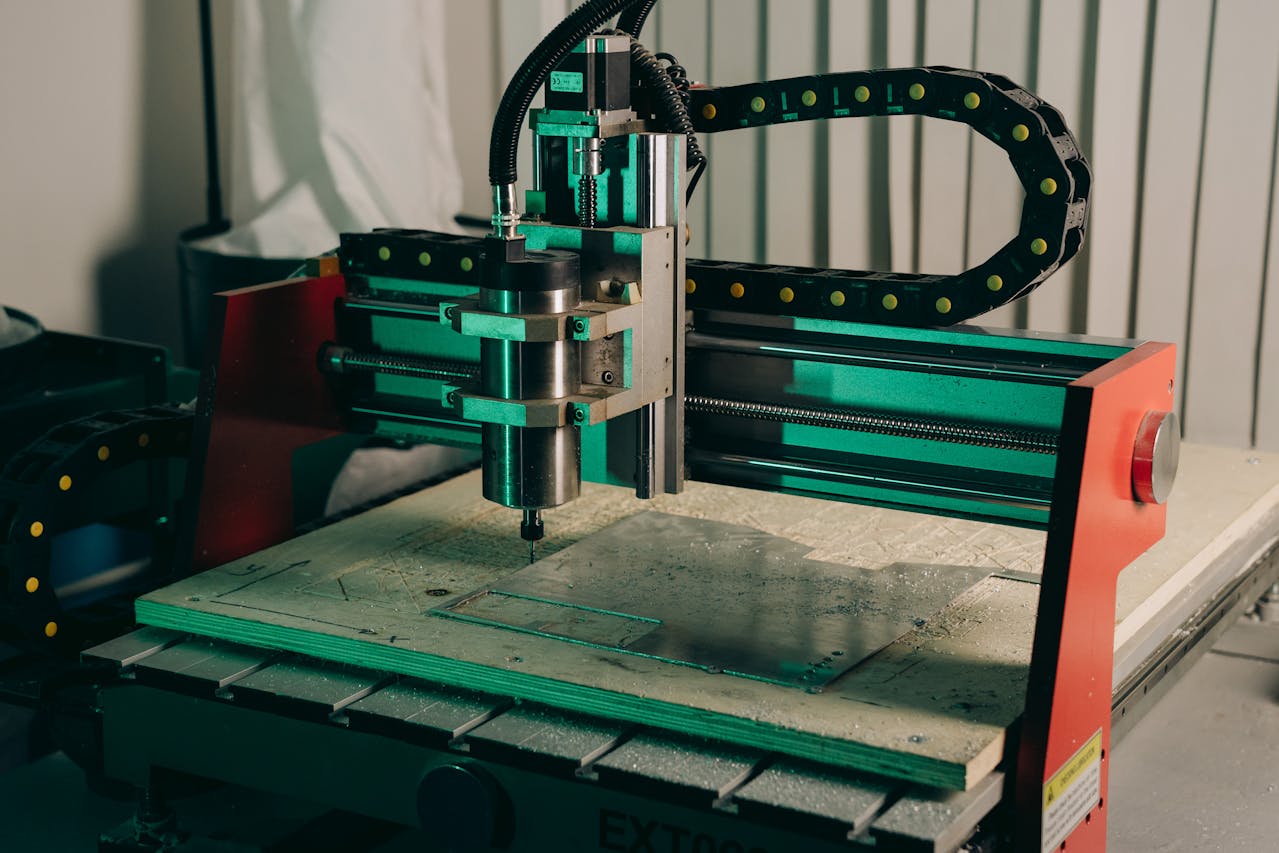In the evolving landscape of manufacturing, CNC (Computer Numerical Control) systems are a core element of precision and productivity. From automating complex tasks to enabling custom production on a large scale, CNC systems provide the backbone for numerous industries.
With industries seeking faster and more precise production methods, CNC technology has become invaluable. This article will explore the many facets of CNC systems, their advantages, and their various applications.
What is a CNC System?
A CNC system is a computer-driven machine that follows programmed instructions to perform precise machining operations. It’s used in fields such as automotive, aerospace, electronics, and more. The core idea is that CNC systems automate complex manufacturing tasks that once required manual labor, reducing time and improving accuracy.
Key Components of a CNC System
To understand the capabilities of CNC systems, let’s break down their primary components:
Controller: This is the “brain” of the system, processing and interpreting commands.
Drive Systems: Motors and gears that convert signals from the controller into movement.
Feedback System: Measures the position of the tool and provides data back to the controller.
Programming Interface: The setup where operators input instructions or load pre-designed CAD/CAM files.
Each of these parts plays a role in executing precise, repeatable actions, making CNC systems both efficient and reliable for mass production.
How CNC Systems Improve Manufacturing
1. Precision and Consistency
CNC systems offer unmatched precision. Since the system follows programmed commands, it can repeat identical tasks multiple times without errors. This is essential for industries like aerospace and electronics, where precision is paramount.
2. Reduced Labor Costs
With CNC systems, companies can reduce the need for extensive manual labor. Fewer workers are required, and those who operate CNC machines often manage several at once. This results in significant savings on labor costs.
3. Shorter Production Times
Manual processes are time-consuming and often prone to delays. CNC systems drastically reduce production time, allowing for faster completion of orders. In a competitive market, the ability to fulfill large orders quickly can be a game-changer.
4. Flexibility in Design and Function
CNC systems are compatible with CAD (Computer-Aided Design) and CAM (Computer-Aided Manufacturing) software. This allows manufacturers to experiment with designs, make rapid adjustments, and bring innovative ideas to life quickly.
Types of CNC Systems
There are different types of CNC systems, each designed for specific tasks. Let’s look at a few common ones:
CNC Mills: Used for tasks that require rotating cutting tools, like drilling and cutting.
CNC Lathes: Primarily for tasks involving rotational symmetry, like creating cylindrical shapes.
CNC Routers: Designed for cutting softer materials like wood and plastic.
CNC Plasma Cutters: Use a plasma torch to cut metals precisely and quickly.
CNC EDM Machines: Use electrical discharges to cut hard metals with precision.
Each type of CNC machine serves unique purposes, and many facilities employ a combination to handle various aspects of manufacturing.
Programming a CNC System: An Overview
Programming is essential to the CNC process, and it typically uses G-code, a language specifically designed to communicate commands to CNC machines. This code tells the machine how fast to move, where to cut, and the specific paths to follow.
There are two main types of programming for CNC systems:
Manual Programming: Operators input G-code manually for simpler tasks.
CAD/CAM Integration: For complex designs, CNC operators use CAD/CAM software to generate the necessary code automatically.
With the increased availability of user-friendly software, even complex CNC programming can be streamlined, allowing manufacturers to reduce downtime and maintain efficiency.
Applications of CNC Systems Across Industries
1. Aerospace
In aerospace, CNC systems are used to manufacture precision parts like turbine blades and fuselage components. The high standards required in this industry make CNC an ideal choice for parts that must meet stringent specifications.
2. Automotive
CNC technology is critical in automotive manufacturing, creating everything from engine parts to custom components. The consistency of CNC systems ensures that every part produced is identical, which is crucial for vehicles’ reliability and safety.
3. Electronics
CNC systems create the tiny, intricate parts used in electronic devices. With the trend toward miniaturization, CNC is invaluable for producing complex components that manual machining simply couldn’t achieve.
4. Medical Devices
For medical applications, CNC machines produce precise instruments and implants. Given the delicate nature of medical devices, the precision of CNC ensures high-quality results that are essential in healthcare.
Challenges in Using CNC Systems
While CNC technology brings tremendous advantages, it also has challenges:
Initial Investment: CNC machines can be costly to purchase and set up, especially for smaller companies.
Maintenance: Regular maintenance is essential to keep CNC systems running optimally.
Skilled Workforce Requirement: Although CNC reduces the need for manual labor, operating and programming these machines still require skilled workers who are trained in CNC operation and maintenance.
The Future of CNC Systems in Manufacturing
With advancements in artificial intelligence and machine learning, CNC systems are evolving. Predictive maintenance powered by AI is now being integrated into some systems, allowing machines to anticipate failures before they happen. Automation technologies are also advancing, leading to smart factories where CNC systems are part of a fully integrated manufacturing process.
Conclusion
CNC systems are a vital part of modern manufacturing, providing speed, accuracy, and flexibility. With applications spanning multiple industries, they’re transforming how we produce everything from airplane parts to medical implants. As technology continues to evolve, so will the capabilities of CNC systems, driving further innovations and efficiencies in manufacturing.
For anyone considering incorporating CNC systems into their operations, the potential advantages in terms of precision, cost-savings, and productivity make it a valuable investment.



